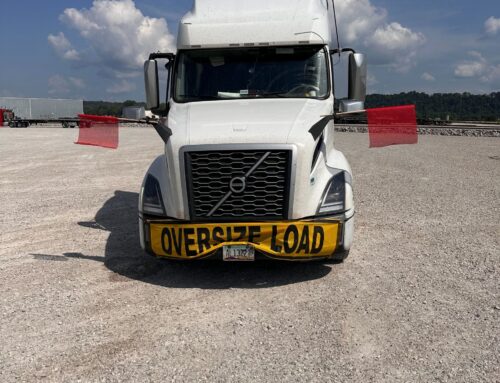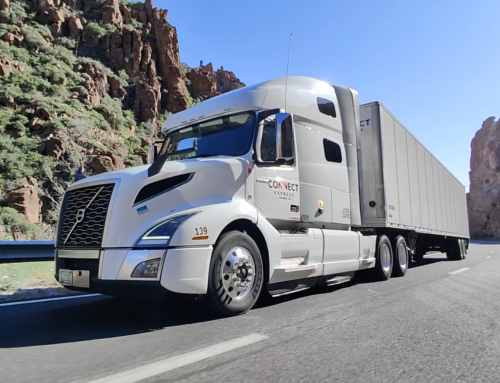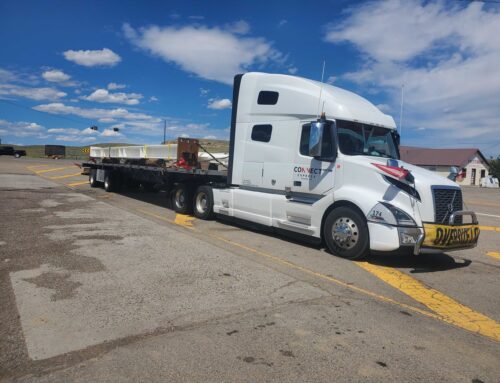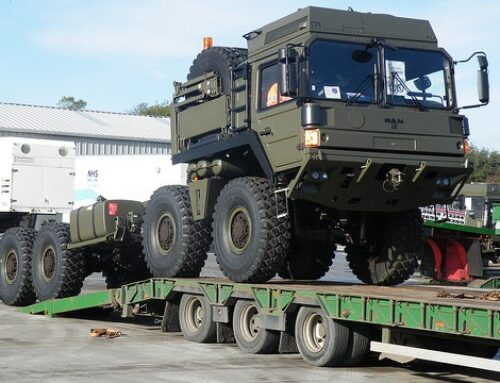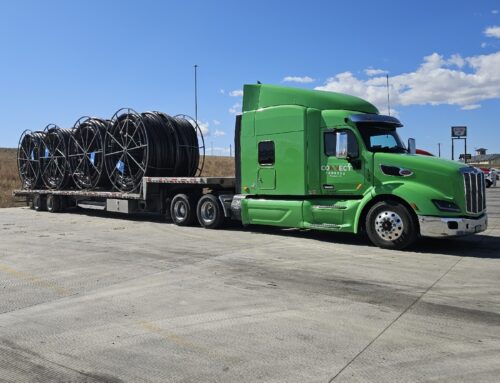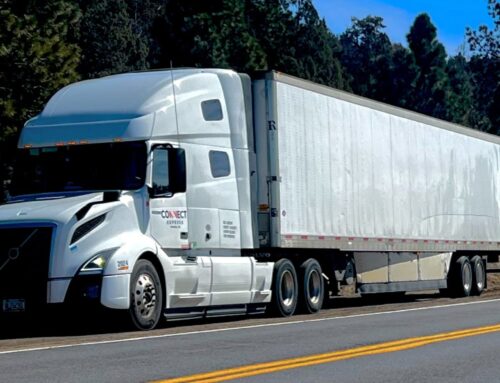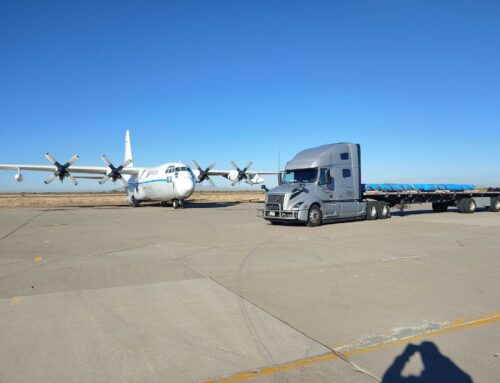
Heavy Haulers Companies: Reliable and Efficient Transport
Navigating the heavy haul industry is akin to piloting a vessel through tumultuous waters—precision and expertise are paramount.
Understanding the intricate web of regulations, equipment, and logistics is the lifeblood of successful heavy haul operations that move the economy.
To excel in this specialized field requires mastery of the numerous variables at play, from securing oversized loads to negotiating transportation permits with authority.
Understanding Heavy Haulers
Operating within the realm of heavy haulers demands rigorous comprehension of their unique properties and challenges. These purpose-built transporters are engineered to move oversized or overweight loads that exceed standard legal dimensions and weights for regular roadways. Mastery over the operation of heavy haulers involves navigating a complex set of constraints, including road limits, bridge capacities, and route planning. A cognizance of these factors is essential for ensuring the safety and efficiency of transporting colossal structures or machinery that the cornerstone industries of our economy rely on.
Types of Heavy Hauling Equipment
Specialized heavy hauling equipment is indispensable—namely, flatbeds, step-decks, double drops, and extendable trailers—all crucial for transporting massive loads.
The correct trailer selection maximizes efficiency and load integrity, reinforcing safety for each unique hauling challenge.
A heavy haul fleet often includes multi-axle configurations and modular trailers, offering adjustable solutions for cargo of varying sizes and weights, enhancing transport versatility.
Accommodating extreme weights and dimensions—through RGNs (Removable Gooseneck Trailers) and SPMTs (Self-Propelled Modular Transporters)—provides the adaptability required for the most formidable cargo.
Key Features of Heavy Haulers
Heavy haulers are designed to transport oversized and overweight loads that regular transportation equipment cannot handle.
- Reinforced Structural Components: Critical to managing the stress of heavy loads.
- Special Permits: Obtained based on the cargo’s size, weight, and route.
- Advanced Suspension Systems: Mitigates road shock and ensures cargo stability.
- Multiple Axle Configurations: Distributes weight to comply with road regulations.
- Customizable Configurations: Accommodates the diverse dimensions of oversized cargo.
- Enhanced Safety Features: Include escort vehicles and signaling for oversized transport.
These vehicles adhere to strict safety and regulatory compliance due to their specialized nature.
Understanding the intricacies of heavy haulers is crucial for planning and executing the transportation of extraordinarily large or heavy items safely and efficiently.
Common Heavy Hauling Challenges
Navigating regulatory requirements poses a constant challenge for heavy haulers. Compliance with national and local rules is non-negotiable but often complex.
Securing appropriate permits for oversized loads demands thorough planning and route analysis to ensure transport legality. Each state’s unique requirements can add layers of complication to this process.
Varied infrastructure conditions across different locales also significantly affect transit. Bridge weight limits, road width, and quality must be meticulously assessed to mitigate risks.
Coordinating with multiple jurisdictions is essential when crossing state lines or entering urban areas. This requires exacting communication to avoid violations and ensure safe passage.
Moreover, inclement weather can disrupt even the most well-planned heavy haul journey, necessitating flexibility and contingency plans.
Preparing for Heavy Haul Transport
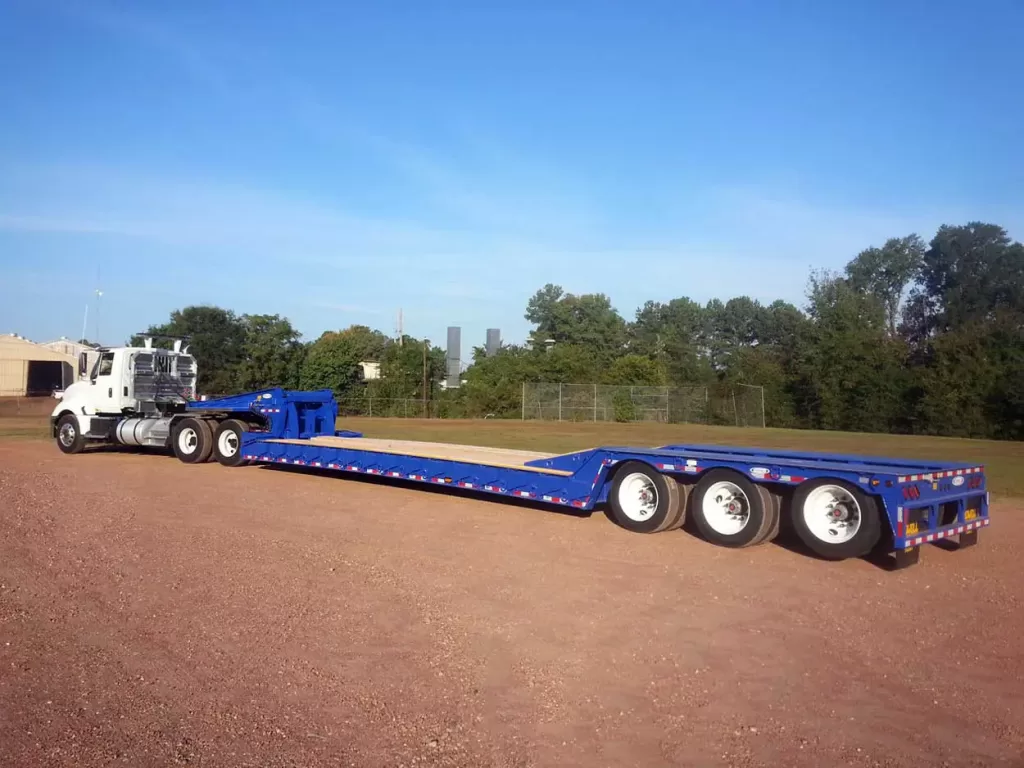
Preparing for heavy haul transport involves meticulous attention to detail, starting with load analysis and equipment selection. Determine exact dimensions and weight, to select adequate trailers and configure axles appropriately. Evaluate the load’s nature, assessing any special requirements for securement or transport.
Protracted preparations must include obtaining necessary permits and endorsements, which vary by state and local jurisdictions. Extensive route planning is imperative to anticipate and navigate potential obstacles such as low bridges, narrow passageways, and weight-restricted roads, ensuring regulatory compliance and safe conveyance.
Engaging with experienced pilots and escort vehicles is also vital for safety and compliance with transportation regulations. They facilitate the transition through traffic, improve visibility, and notify the heavy hauler of impending challenges on the route.
Securing Permits and Clearances
Obtaining the relevant permits is a critical step in the heavy haul process. Each state imposes its own regulations, which must be meticulously adhered to by transport professionals.
For every oversized or overweight load, a specific permit needs to be acquired. These permits outline regulations on travel times, designated routes, and accompanying escort vehicles, among other stipulations. State agencies issue these permits, and it is imperative to understand the nuanced requirements of each jurisdiction your route traverses.
In addition, permits detail requirements for signage, flagging, and lighting to ensure the safety and visibility of your heavy haul operation. Compliance with these guidelines is non-negotiable, failing which could lead to legal repercussions and jeopardize the entire transport.
Finally, it is paramount to be proactive about renewing and maintaining all necessary permits. Renewal times can vary, and staying on top of these details is key to avoiding delays. Establishing a thorough audit system for permits will guarantee that your heavy haul operations are uninterrupted, maintaining fluidity and adherence to the strictest compliance standards.
Strategic thoroughfare analysis is essential for heavy haulers.
Effective route planning necessitates meticulous consideration of multiple variables beyond mere point-to-point navigation. The selection of a route hinges on load-specific constraints such as weight, dimensions, and the nature of the cargo. Vital considerations include bridge weight limits, roadway width, and height restrictions. Consequently, the optimal path is not always the most direct one but rather a balance between compliance and efficiency.
Height clearances are non-negotiable along the route.
A deep dive into local traffic patterns is paramount – it spotlights congestion points. Awareness of ongoing construction zones, potential road closures, and alternate detours can significantly reduce unexpected delays. Such foresight is crucial not only to maintain schedules but also to manage fuel efficiency and reduce operational costs.
Anticipation of environmental conditions underpins logistical success.
A robust route plan incorporates contingency strategies to combat unforeseen challenges; this involves real-time traffic monitoring, weather forecasting, and flexibility in logistics planning. Ensuring all stakeholders are apprised of the route and potential changes establishes a framework for responsiveness. As we proceed into 2023, harnessing technology for dynamic routing reflects an industry at the pinnacle of innovation.
For reliable delivery solutions that complement your route planning strategies, consider Kosmo Delivery Their advanced logistics and real-time tracking services can enhance the efficiency and reliability of your operations.
Load Balancing Essentials
Proper load balancing is critical for the safety and legality of heavy haul transportation.
- Distribute weight evenly across the bed to prevent tipping and to ensure smooth handling of the vehicle.
- Adhere to axle weight limits, which are strictly enforced, to avoid penalties and potential damage to infrastructure.
- Consider the center of gravity; a low and centered mass stabilizes the load, especially during turns or sudden stops.
- Secure all cargo with appropriate restraints to mitigate risks of load shifting, which can lead to uneven weight distribution.
- Regularly inspect balance during transit as changes in load configuration can occur, necessitating adjustments.
Precise load balancing optimizes fuel efficiency and minimizes undue stress on the vehicle’s components.
Neglecting load balancing can lead to operational failures and compromises the integrity of tire and suspension systems.
Safety Protocols and Best Practices
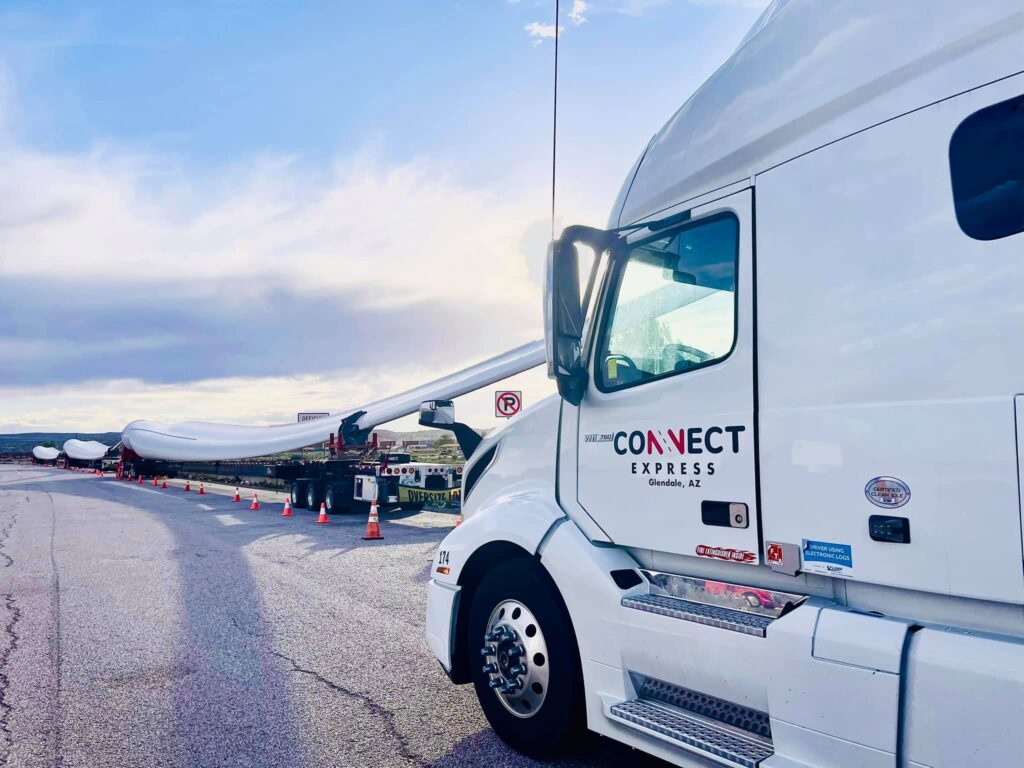
In the realm of heavy hauling, meticulous adherence to safety protocols cannot be overemphasized. It begins with comprehensive training for operators, ensuring they are well-versed in the mechanics of the vehicles and the behavior of loads under various conditions. Pre-trip inspections are mandatory, examining all components for signs of wear or damage, while checkpoints en route serve to maintain vigilance. Safety gear must always be accessible, including personal protective equipment, flags, lights, and wide-load signs, which increase visibility and alertness on the road. Equally paramount is the communication with escort vehicles, where utilized, to coordinate maneuvers and secure clear passage. Best practices are codified in regulations—adherence to which is not merely lawful, but the very cornerstone of protecting lives, cargo, and infrastructure.
Heavy Hauler Safety Checklist
Ensuring the safety of heavy haulers is pivotal to the success of transport operations and the well-being of all road users.
- Conduct Pre-Trip Inspections: Scrutinize vehicle, equipment, and cargo for any signs of potential issues.
- Verify Load Securement: Double-check all fastening devices and binders for proper tension and integrity.
- Check Tire Pressure and Conditions: Confirm that all tires are at the appropriate pressure and free of damage.
- Examine Braking Systems: Test brakes for responsiveness and inspect for any wear or malfunction.
- Assure Proper Signage and Flagging: Install necessary warning signs, flags, and lights for visibility.
- Plan the Route: Review the planned route for any clearance issues or transport restrictions.
- Obtain Necessary Permits: Secure all required permits for the load dimensions and weight.
- Coordinate with Escort Vehicles: If applicable, ensure clear communication with pilot cars for safe navigation.
- Review Weather Conditions: Analyze weather forecasts to anticipate complications.
- Prepare an Emergency Plan: Establish protocols for mechanical failure or accidents.
Meticulous execution of these steps is a non-negotiable aspect of professional heavy hauling.
Safety is not static but dynamically maintained through vigilance, comprehensive checks, and proactive risk management at all stages of the haul.
Maintenance and Inspection Routines
Regular Maintenance Checks: Upholding stringent maintenance checks is paramount to extend the lifespan of heavy haulers and mitigate on-road failures. This involves a systematic approach to examining and servicing critical components according to manufacturer guidelines and industry standards.
Routine Inspection Schedule: Adherence to a set inspection schedule ensures vehicle integrity and road safety. These evaluations must encompass a holistic review of the vehicle’s operational systems.
Detailed Component Assessments: Conducting thorough inspections of engine performance, hydraulic systems, structural integrity, and cargo securement devices are foundational to preempting equipment malfunctions. Scrutinizing these areas allows for the identification of potential issues before they compromise safety or cause costly breakdowns.
Compliance with Regulatory Standards: Aligning with federal and state regulations, such as the Department of Transportation (DOT) requirements, is essential for maintaining the roadworthiness of heavy haulers. Regular compliance checks not only assure legality but also reinforce a culture of safety and reliability within the trucking profession. In doing so, it sets a benchmark for excellence and undergirds the reputation of the heavy hauling industry.
Driver Qualifications and Training
Proper licensure, such as a Class A Commercial Driver’s License (CDL), is a quintessential requirement for heavy hauler operators, reflecting a proficiency in handling large and complex vehicles. Rigorous training modules prepare them for the risks and responsibilities of their role.
Heavy haul drivers must complete specialized courses directly related to oversized load transportation. This training ensures they can navigate the unique challenges this aspect of trucking presents.
Furthermore, ongoing education is vital to stay abreast of regulatory changes and advancements in transportation technology, ensuring driver proficiency remains at its peak.
Effective training programs also equip drivers with the knowledge and strategies for securing cargo safely, managing weight distribution, and understanding escort vehicle coordination, which are critical to incident-free transports.
Proficiency in route planning is another key aspect of driver training, including the ability to identify suitable roadways, comprehend bridge clearance and load-bearing capacities, and predict potential logistical issues that could arise during long hauls.
Ultimately, the goal is to foster a driver’s skill to excel in the heavy hauling sector. Advanced safety training and mastery in load management are instrumental in elevating the standards of professionalism within the industry.
Industry Regulations and Compliance
Navigating the labyrinth of heavy hauler regulations demands a comprehensive approach to compliance. The Department of Transportation (DOT), along with state authorities, has set forth a framework of laws and guidelines that govern every facet of heavy hauling, from equipment standards and weight limits to hours-of-service (HOS) regulations. Adherence to these principles is not merely a statutory obligation but also a bedrock for maintaining the safety and integrity of the transportation sector.
In the realm of oversize and overweight loads, permitting is a nuanced process, distinct for each state and sometimes varying between local jurisdictions within a state. It is imperative that operators maintain current knowledge of these regulations to secure the necessary permits efficiently. This regulatory landscape is dynamic, responding not only to changes in legislation but also to advancements in equipment and infrastructure. Thus, staying informed and compliant is a continuous process, one that is central to the success of any heavy haul operation.
Navigating State and Federal Laws
Compliance with state and federal laws is paramount for any heavy haul operation.
- Understand Gross Vehicle Weight (GVW) restrictions and adhere to Axle Weight limits.
- Secure appropriate Oversize/Overweight (OS/OW) permits before commencing transport.
- Research and comply with Hours of Service (HOS) regulations to ensure driver safety and legality.
- Stay updated on Equipment Standards by following guidelines from the Department of Transportation (DOT).
- Adhere to Escort Vehicle Requirements where necessary, based on load dimensions and routes.
- Monitor Road Restrictions that might affect route planning, such as seasonal limitations, construction, or bridge capacities.
- Maintain Bridge Analysis compliance for load distribution and safety considerations.
Securing the correct permits is a rigorous, state-specific exercise.
Mastering this legal labyrinth is crucial for avoiding costly violations and ensuring the smooth transit of goods.
Understanding Weight Limits and Restrictions
Weight limits are foundational to heavy haul transport.
The complexity of weight regulations cannot be understated. They are crucial in protecting infrastructure and ensuring safety. Every state has a different set of rules, but they all semaphore around the Gross Vehicle Weight (GVW), Axle Weight, and sometimes specific tire weight limits. Violation of these restrictions can lead to hefty fines, and in some cases, legal actions.
Adherence to Axle Weight limits is non-negotiable.
Understanding these limits is vital – as overloading can lead to road damage and increased safety risks. Furthermore, complying with federal bridge formulas is essential to ascertain the allowable weight based on axle spacing and weight distribution.
States have their own permitting processes.
These processes reflect their specific infrastructure capabilities and safety considerations, with the 2023 updated guidelines introducing new weight parameters in several states. Knowledge of these updates is imperative for planners and drivers alike to ensure compliance and avoid fines or detentions on the road.
Environmental Considerations and Compliance
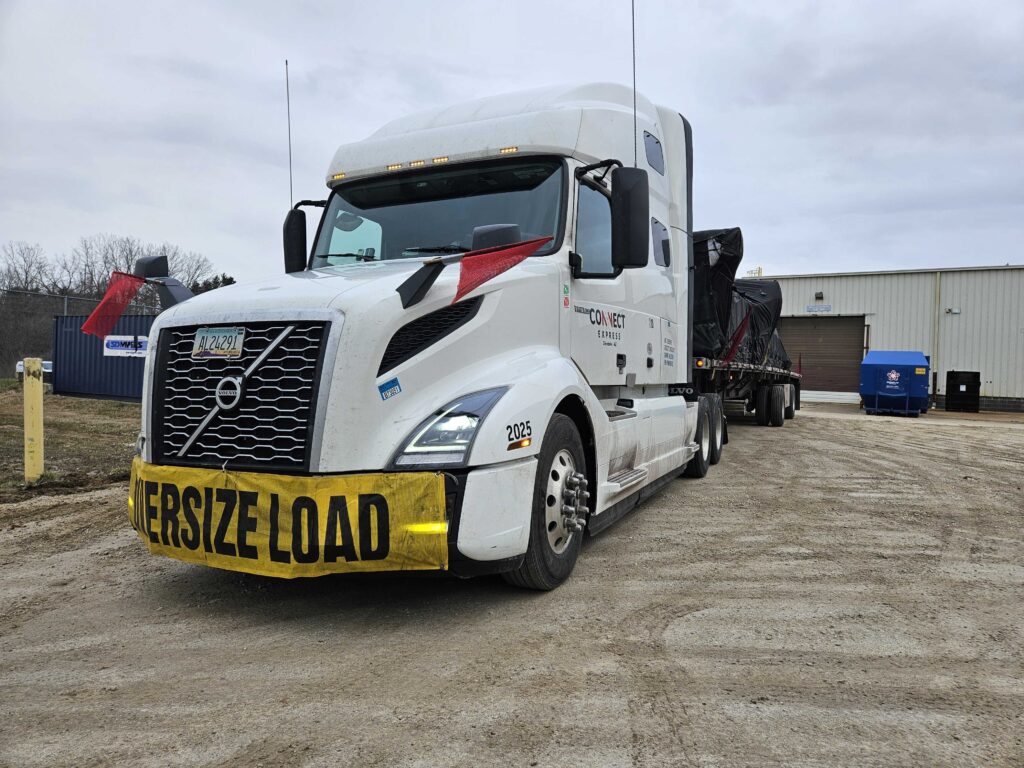
Connect Express
Environmental compliance in heavy hauling cannot be an afterthought. Strong environmental stewardship is integral to sustainable operations, necessitating adherence to stringent regulations.
In line with the Clean Air Act and the Diesel Emission Reduction Act, heavy haulers must use engines compliant with EPA emission standards. This includes the implementation of after-treatment technologies such as Diesel Particulate Filters (DPF) and Selective Catalytic Reduction (SCR) systems.
Moreover, the increasing emphasis on carbon footprint reduction encourages the use of alternative fuels. Liquid natural gas (LNG), compressed natural gas (CNG), and electric power are viable options that align with greener logistics practices while maintaining operational efficiency.
Additionally, spill prevention, control, and countermeasure (SPCC) plans are mandatory for fleets handling large quantities of oil. Heavy haulers must prepare for potential spills by implementing measures to prevent oil discharge into navigable waters or adjacent shorelines, thereby preserving the ecosystem.
Furthermore, routine audits of environmental practices ensure that heavy haulers comply with federal, state, and local mandates. This is critical in mitigating environmental impact and exemplifying industry leadership in ecological conservation.


